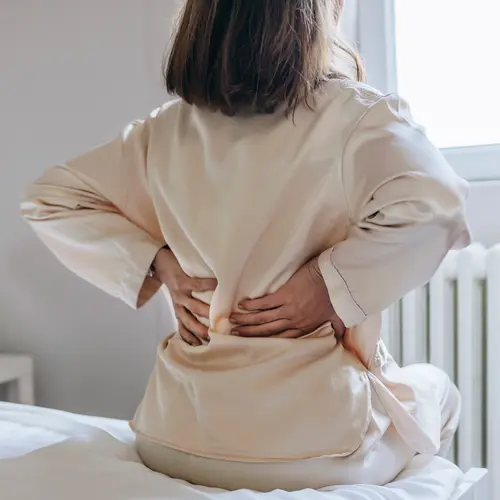A bone mineral density test, sometimes just called a bone density test, detects whether you have osteoporosis, a word that comes from Greek and literally means “porous bone.”
When you have this condition, your bones get weak and thin. They become more likely to break. It’s a silent condition, which means you don’t feel any symptoms. Without a bone density test, you may not realize you have osteoporosis until you break a bone.
How the Test Works
The bone density test is painless and quick. It estimates how dense or thick your bones are by using X-rays.
The X-rays measure how much calcium and minerals are in a part of your bone. The more minerals you have, the better. That means your bones are stronger, denser, and less likely to break. The lower your mineral content, the greater your chance of breaking a bone in a fall.
Who Should Get Tested
Anyone can get osteoporosis. It’s more common among older women, but men can have it, too. Your chances increase as you age.
You should discuss with your doctor whether you need the test. They may recommend it if you meet any of the following:
- You’re a woman 65 or older
- You’re a postmenopausal woman 50 or older
- You’re a woman at the age of menopause and have a high chance for breaking bones
- You’re a woman who has already been through menopause, younger than 65, and have other things that give you a higher chance of osteoporosis
- You’re a man 50 or older with other risk factors
- You break a bone after 50
- You’ve lost more than 1.5 inches of your adult height
- Your posture has gotten more hunched
- You’re having back pain without any cause
- Your periods have stopped or are irregular although you’re neither pregnant nor menopausal
- You’ve gotten an organ transplant
- You’ve had a drop in hormone levels
Some types of prescription drugs can cause bone loss. These would include glucocorticoids, a class of drugs used to reduce inflammation. Tell your doctor if you’ve been on cortisone (Cortone Acetate), dexamethasone (Baycadron, Maxidex, Ozurdex), or prednisone (Deltasone).
What to Expect
Usually the test examines the bones in your spine, hip, and forearm. These are the bones that are most likely to break when you have osteoporosis.
The 2 types of bone density tests take less than 15 minutes. They are:
Central DXA: This test looks at your spine and hip bones. It tends to be more accurate. It also costs more. Central DXA stands for Dual Energy X-ray Absorptiometry.
During the test, you lie down on a padded platform, fully clothed. A machine arm passes above you, sending low-dose X-rays through your body. Based on how much the X-rays change after passing through your bones, it comes up with an image of your skeleton. This test lasts about 10 minutes.
The image is given to an expert who reads the results. This could take a few days depending on your doctor’s office.
Peripheral test: This measures bone density at your wrist, finger, and heel. This test is less thorough because it doesn’t examine your hips or spine. It is usually cheaper.
The device is portable, so it can be brought to health fairs and pharmacies. This makes the test available to more people who may not be able to get the central DXA test.
Peripheral tests are also a way to screen people, so those who show a greater chance for osteoporosis can get more testing. They are also used for larger people who cannot get the central DXA because of weight limits.
How to Prepare
- Don’t take calcium supplements for 24 hours before the exam.
- If you’ve had an injection of barium or contrast dye for a CT scan or MRI, wait 7 days before having a central DXA. The contrast dye could interfere with your bone density test.
- Avoid wearing clothes with metal zippers, belts, or buttons.
There is very little risk to taking the test. You're exposed to very low levels of radiation, less than a chest X-ray or an airplane flight.
What Your Results Mean
You’ll get 2 scores after your bone density test:
T score: This compares your bone density with a healthy, young adult of your gender. The score indicates if your bone density is normal, below normal, or at the levels that indicate osteoporosis.
Here’s what the T score means:
● -1 and above: Your bone density is normal
● -1 to -2.5: Your bone density is low, and it may lead to osteoporosis
● -2.5 and above: You have osteoporosis
Z score: This allows you to compare how much bone mass you have compared with other people of your age, gender, and size.
A Z score below -2.0 means that you have less bone mass than someone your age and that it could be caused by something other than aging.
How Often Should I Get Tested?
If you are taking medication for osteoporosis, expect to have a bone density test every 1 to 2 years.
Even if you don’t have osteoporosis, your doctor may suggest that you get a bone density test every 2 years, especially for women during or after menopause.

